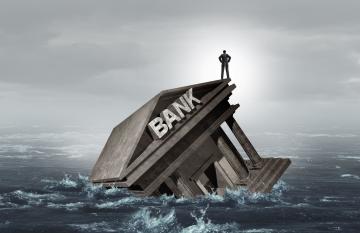
On March 10th of this year, Silicon Valley Bank (SVB) failed and was taken over by the Federal Deposit Insurance Corporation. There has been a lot of talk about the handling of the situation and what should have been done. In the end, the FDIC and federal government decided to make all depositors whole, even those that had deposits above the $250k insurance limit. (Check out a previous blog post for the history of FDIC insurance, Don't Panic! (sowafinancial.com))
Some of the headlines surrounding this event were pretty eye catching: “Second Largest Bank Failure in US History” was one. In September of 2008, Washington Mutual (WM) had to close its doors in the wake of the Great Financial Crisis. Its assets at the time were just over $300 billion; SVB’s assets were just over $200 billion. So, on a nominal basis the headline is true, and even if you adjust for inflation using the Consumer Price Index, it still takes home the silver medal. But is the CPI the correct measuring stick for this event? How can we compare the failure of SVB to past failures?
First, we must acknowledge that there are two types of inflation: consumer price and asset price inflation. The famous Fed Chair Paul Volcker referred to them as cousins. CPI measures the overall price increase of a “broad basket” of goods and services and has been considered a necessary evil since World War II. Central banks around the world are willing to tolerate low levels of CPI, 2% per year at most. Asset price inflation is much different in the sense that no one really opposes it. In other words, no one complains that the value of their house or 401(k) has gone up in value, like they do when the cost of groceries goes up. Until recently the cousins moved together. But after the Great Financial Crisis the Federal Reserve began an unorthodox approach to monetary policy called quantitative easing (QE). QE was a pretty straightforward policy (although you’d never know that by listening to policy makers); the fed printed money and then bought treasuries from a small club of very large banks known as primary dealers. QE, combined with suppressed interest rates, has caused asset prices to increase at a much faster pace than consumer prices. It has also, many argue, increased inequality in our society.
So, when comparing the SVB failure to WM we must do so with asset price inflation in mind. In September of 2008 when WM failed, the estimated market cap of the S&P 500 was $10 Trillion. WM’s assets then represented 3% of that. How about SVB? The same analysis produces a 0.6% ratio. ($210 billion in SVB assets divided by S&P 500 market cap today of $32 trillion.) The analysis is even more obvious when we just look at the top 20 stocks in the index: here, the ratios are 11% for WM and 1.8% for SVB. WM was also the 6th largest bank in the US by total assets the year before it failed. SVB was the 18th largest last year. In my opinion, if SVB does deserve the runner up spot then it would be like losing the Super Bowl by 100 points.
This is one of the main problems with inflation: it distorts reality. It gets harder and harder to compare prices across time periods. It gets harder and harder for younger generations to relate to older ones, especially when it comes to making financial decisions. When a young person asks his or her parent what they spent on their first home, the answer is not only irrelevant but comically so. Ratios can help in these situations, but they are often counter intuitive and leave the average person no better off. Comparing figures on a nominal basis is just too easy. So are the headlines created by the media.